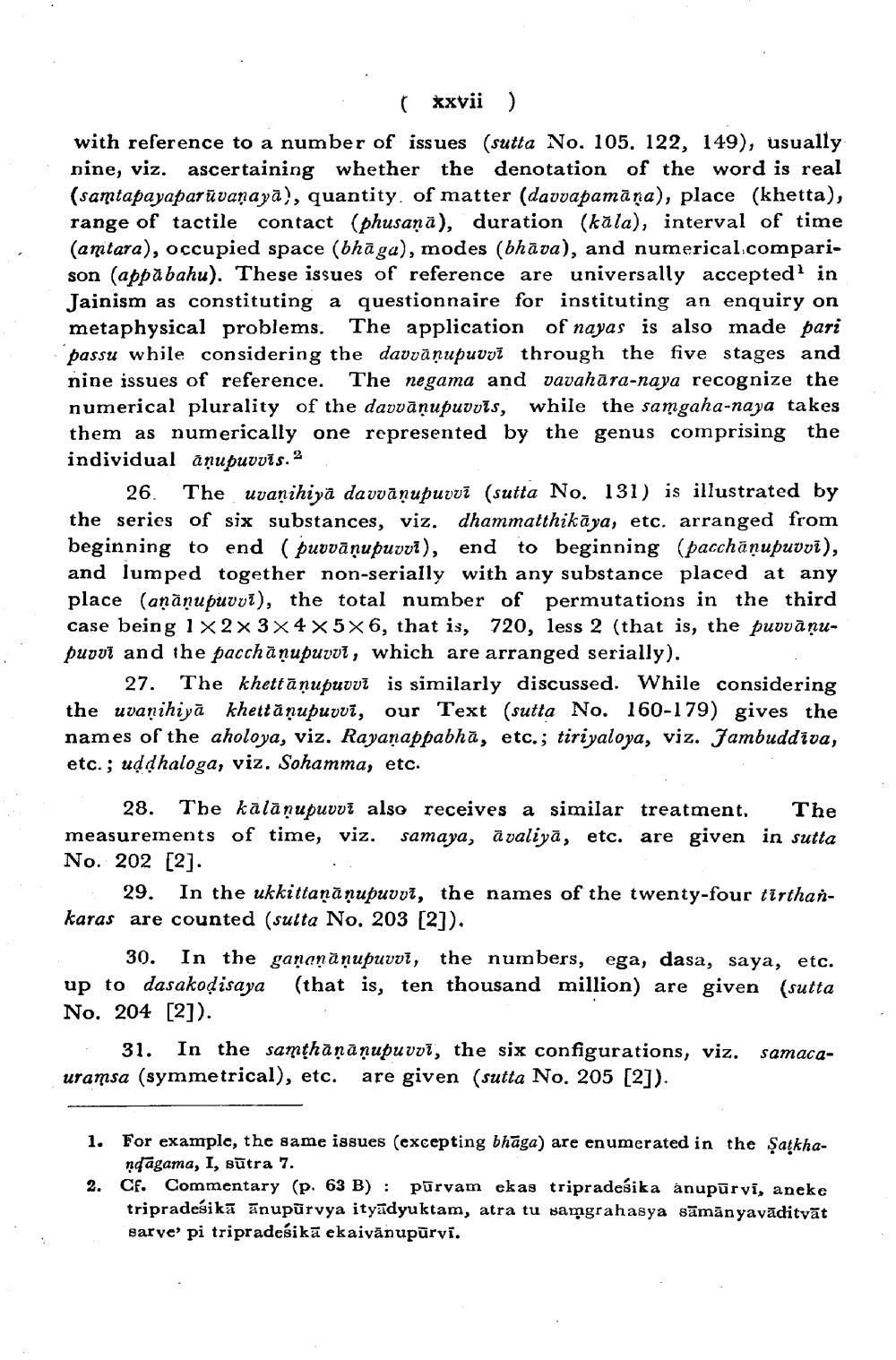________________
( *xvii)
with reference to a number of issues (sutta No. 105. 122, 149), usually nine, viz. ascertaining whether the denotation of the word is real (samtapayaparūvaņaya), quantity of matter (davvapamāna), place (khetta), range of tactile contact (phusana), duration (kala), interval of time (amtara), occupied space (bhāga), modes (bhāva), and numerical.comparison (appa bahu). These issues of reference are universally accepted in Jainism as constituting a questionnaire for instituting an enquiry on metaphysical problems. The application of nayas is also made pari passu while considering the davvāņupuvoz through the five stages and nine issues of reference. The negama and vavahāra-naya recognize the numerical plurality of the davvāņupuvuis, while the samgaha-naya takes them as numerically one represented by the genus comprising the individual anupuvvīs. 2
26. The uvanihiya davvānupuvvi (sutta No. 131) is illustrated by the series of six substances, viz. dhammatthikāya, etc. arranged from beginning to end (puovānu puvui), end to beginning (pacchānupuvvi), and lumped together non-serially with any substance placed at any place (anāņu puvvt), the total number of permutations in the third case being 1 X 2 X 3 X 4 X 5 X 6, that is, 720, less 2 (that is, the puvvāņupuovi and the pacchānupuvut, which are arranged serially).
27. The khett āņupuvuż is similarly discussed. While considering the uvanihiya khettă nupuvoi, our Text (sutta No. 160-179) gives the names of the aholoya, viz. Rayanappabhā, etc.; tiri yaloya, viz. Jambuddiva, etc.; uddhaloga, viz. Sohamma, etc.
28. The kälānupuvut also receives a similar treatment. The measurements of time, viz. samaya, avaliya, etc. are given in sutta No. 202 [2].
29. In the ukkittană nupuvui, the names of the twenty-four tirthankaras are counted (sulta No. 203 [2]).
30. In the gananānupuvvi, the numbers, ega, dasa, saya, etc. up to dasakodisaya (that is, ten thousand million) are given (sutta No. 204 [2]).
31. In the samthāņāņupuvvī, the six configurations, viz. samacauramsa (symmetrical), etc. are given (sutta No. 205 [2]).
1. For example, the same issues (excepting bhāga) are enumerated in the Satkha
ndagama, I, sūtra 7. 2. Cf. Commentary (p. 63 B) : pūrvam ekas tripradeśika ånupūrvi, aneke
tripradesikā ānupūrvya ityādyuktam, atra tu samgrahasya sāmānyavāditvāt sarve' pi tripradeśikā ekaivānupūrvi.




